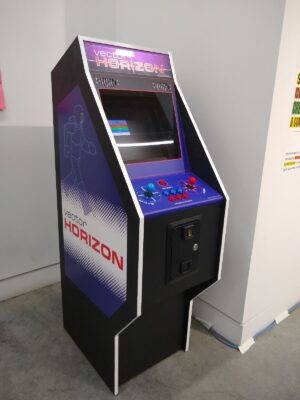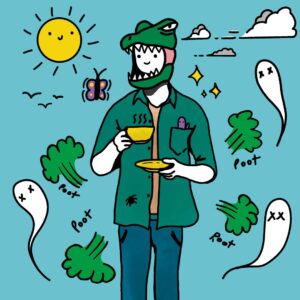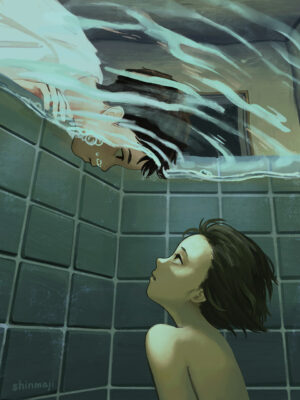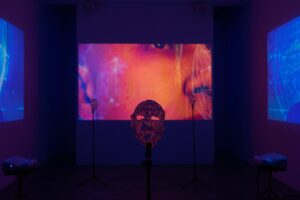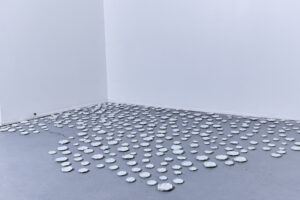VULNERABILITY AS STRENGTH: CREATING SPACE FOR WOMEN’S MENTAL WELLBEING
Kaitlyn Roberts
See it On Campus: Level 2
Visitor InfoMy work can be found on the second floor of ECUAD within the Libby Leshgold Gallery. Stop by at the opening reception on May 10th to chat with me!
The patient, named above, 2022
silk, thread, sugar, the artist’s medical records from Bounce Back Canada.
© Kaitlyn Roberts.
The patient, named above is a project that I have been working on to share and reflect on my experience with Bounce Back Canada – a suicidal prevention program. The piece involves a silk banner which showcases one of my medical records from this program and hangs over a bed of sugar. Amongst the bed of sugar, swims another silk medical record; it is also redacted using embroidery thread, except for the phrase: ‘patient, named above’. This sentence was one that came up throughout my medical records that made me frustrated. This language and vocabulary made it seem as though these records were already made, these sentences and words already formed, ready for someone to fill in my numbers. It is as if psychiatric medical records are like cookie cutters, forming and placing all of their patients under the same mold. Have you ever tried to contain sugar in a mold or a cookie cutter? It spills out, leaking everywhere.
The sugar in The patient, named above is no exception. It cannot be contained, it cannot fit into any mold, just like a mental illness. Although my own experience with suicidal ideation involves me persisting as I ‘did not endorse in suicidality’, many others have experienced a different story. This piece uses my experience to showcase that although I am lucky enough to have risen from the sugar, many others have melted into it.

Dear Euodia and Burnt candles, 2022
thread on photographs, ash, jars, memories.
© Kaitlyn Roberts.
Dear Euodia is a photographic installation. The photographs were taken from frames of a video where I read my medical records to my camera.
Burnt Candles is an installation. The photographs within the jars are taken from a photo journaling process, where I told my camera my story of sexual violence. The photographs are then placed into glass jars and burned, creating ash.
As each of the projects were created using journaling, photographs, and memoirs, when placed together, the two works bring out the theme of memories and traumatic recalls.
The photographs have been burnt so that part of each image is no longer there. The burnt edges of the photographs are stitched up; like a bandage from an amputation… or suturing of a wound.
Ash becomes a great metaphor in this body of work as burning is seen as ceremonial, cleansing, and cremation. However, ash never disappears. It is always there. It can be swept away but it will still float in the air, attaching itself to whatever it can. It lives forever, but hides among the dirt, dust, and dead skin cells.

Period., 2021
right: Period. (264g of sugar, silk, the artist’s menstrual cycle, hysteria) image of artist’s menstrual cycle printed on silk, after data track consuming 264g of sugar
left: Period. (0g of sugar, silk, the artist’s menstrual cycle, hysteria) image of artist’s menstrual cycle printed on silk, after data track consuming 264g of sugar
© Kaitlyn Roberts.
Throughout my research surrounding mental illness, I found that many doctors were finding quitting sugar as a cure for anxiety. So, I decided to see if this theory was true, and I quit it for a month. All sugar: fruits, dairy, pasta, bread, processed foods, etc.
Through video, photography, and mapping, I documented the entire experience and watched as my body changed. The most extreme changes happened to the physical aspects of my body: My skin cleared, I lost eight pounds, but what I was most intrigued by was how it affected my menstrual cycle.
Period. is a body of work produced from this experiment. Whilst there were zero grams of sugar in my body, I photographed the results of my menstrual cycle on a pad; every day for seven days. Once the sugarless month was over and I was back to my unhealthy habit of sneaking sweets into my body, I photographed the results again; my menstrual cycle on a pad, every day for seven days.
A menstrual cycle has been considered a periodic illness, but not only that, mental illness was originally considered a ‘women’s disease’ caused by ‘hysteria’ (i.e., originating in the uterus).
The use of silk contrasts with the menstrual cycle. It pays homage to all women before me who were perceived as delicate but were hiding their strength. Silk is a seemingly weightless fabric. It is considered a luxurious material, used only for the finest of things. The silk was chosen as it is the complete opposite of a menstrual pad and tampon. It is non-absorbent and it is something that is not thrown out very often. It is delicate and thin; everything the patriarchal and capitalist society says a woman should be.


